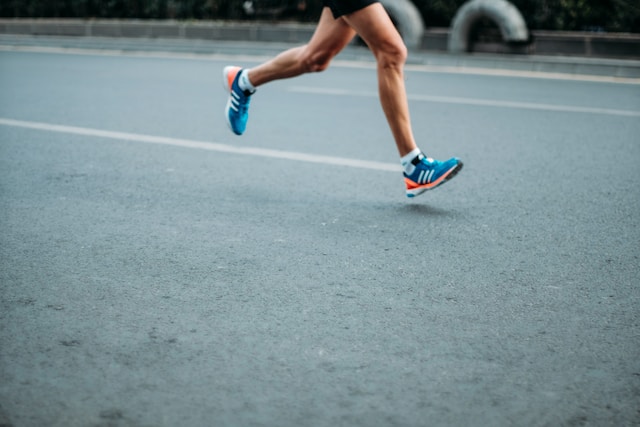By WIN Provider: Jeff Dill, Physiotherapist
Speed – Part 1 in a Series on How to Improve Speed (Walking / Running)
Speed. It’s something that we, as humans, love to measure. What child hasn’t tried to race a friend to see “who’s faster”. But speed is also important in other ways, including reducing mortality risk as we age. So, what is “speed”? How can we improve it and how can we use that knowledge to improve our performance and health as we age?
Components of Speed
Speed can be broken down to two components: stride length, and stride frequency. Let’s look at stride length first.
Stride Length is the distance between the same point of contact on successive foot strikes of the same foot. For example, standing on your left foot, mark the spot where your heel is, then take a step with your right leg, then another back onto your left. Mark the spot where your left heel landed and then measure the distance between the two markings. That’s your stride length. Your “step” length would be half that distance.
Stride length will vary from person to person based on many factors including height, strength, balance, tendon elasticity, and neuromuscular control. As we age, we tend to have shorter stride lengths in general. This is important because research has shown that in people 65 or older, a stride length of 0.64m or less (0.32m/step) is associated with a higher risk for falls, and overall mortality rate1.
When looking at running, your stride length will naturally become longer as your running speed increases, however, the amount by which it increases will vary by person, depending on numerous factors, including joint and muscle flexibility, strength/power, and terrain. When running up a hill, your stride length naturally gets shorter, which is one reason why we run slower up a hill (other than the obvious reason of you’re running up a hill)! To offset this, you need to increase your stride frequency, the next thing we will discuss here.
Stride frequency is the speed with which you’re taking your steps, or how many steps you’re taking in a minute. As our walking or running speed increases, our stride frequency will naturally increase. When looking at a sprinter like Usain Bolt, he would take around 247 steps in a minute! When looking at a standard runner, a frequency of 170 steps/minute or less can sometimes be the cause of injuries due to higher ground contact times (GCT). This is the amount of time our foot spends on the ground when we walk or run. With a longer GCT, our muscles, bones and ligaments are forced to withstand that load for a longer period of time which can lead to various injuries, especially bony-stress injuries.
So, when you break “speed” down, it is simply made up of how fast you’re taking your steps, and how long those steps are. In the next blog, we will dive into ways to increase both of those factors.
- Bytyçi I, Henein MY. Stride Length Predicts Adverse Clinical Events in Older Adults: A Systematic Review and Meta-Analysis. Journal of Clinical Medicine. 2021; 10(12):2670. https://doi.org/10.3390/jcm10122670


